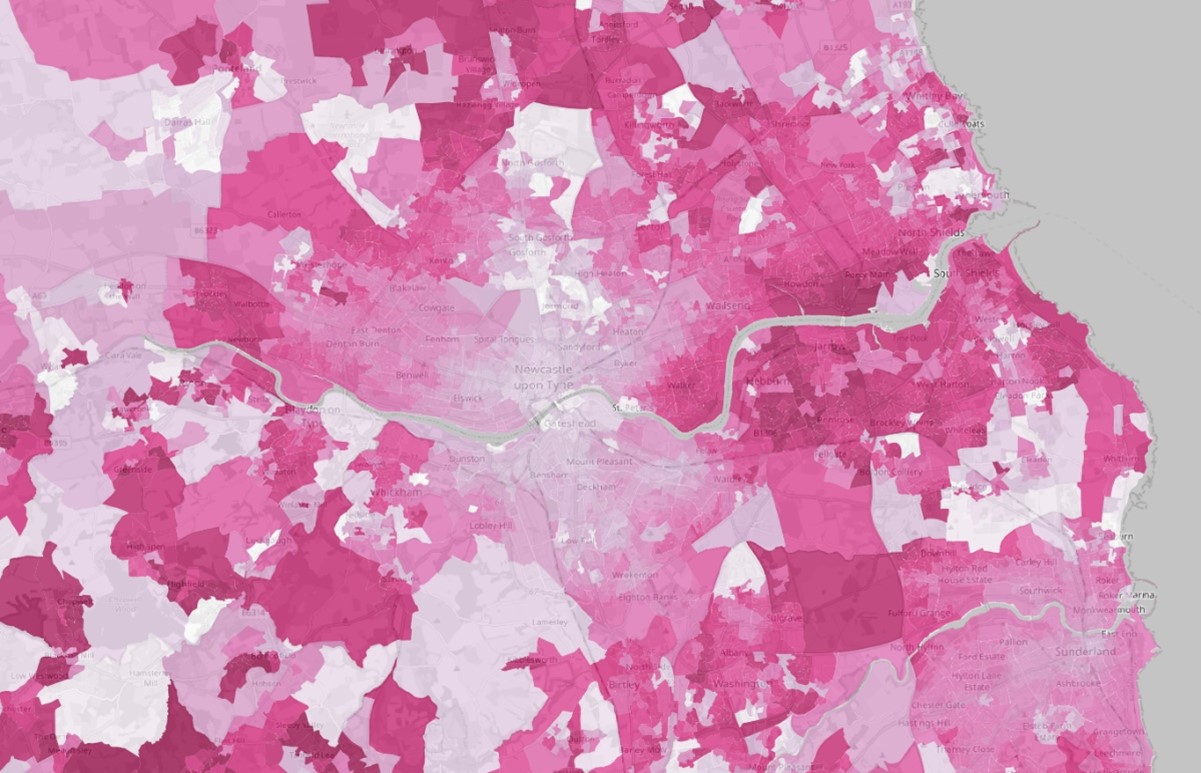
Poorly performing, inadequate, and unaffordable transport choices in some areas of the North have a fundamental impact on the everyday lives of residents. The risk of what we term transport related social exclusion (TRSE) in the North remains high, particularly in coastal communities, rural towns, and communities on the fringes of the region’s largest cities. Transport for the North’s updated TRSE data tool and research identifies places such as Hartlepool, Redcar & Cleveland, Blackpool, County Durham, Cumberland and Northumberland as being at a particularly high risk of TRSE.


Transport for the North is leading the way on understanding TRSE, developing data tools that can help local transport authorities and others across England to identify communities where transport issues contribute to poverty, poor health, and social exclusion. This in turn enables transport decision-makers to prioritise areas in most need, and to design changes that better fit the needs of disadvantaged areas and communities. Improvements to our TRSE tool have allowed us to build a more accurate picture of this issue than ever before – measuring access to a wider range of everyday places, updating how we measure vulnerability to social exclusion, and improving the level of overall detail.


As our new research demonstrates, the areas with the highest risk of TRSE are characterised by a vicious cycle of high car-dependency and a lack of viable public transport and active travel options for everyday journeys. This can impact quality of life for all residents, but is particularly significant for residents already facing poverty, poor health, or social isolation. Sharp increases in the cost of living and the legacies of the COVID-19 pandemic have only added to the multiple forms of disadvantage these residents face. Addressing this requires targeted investment in affordable, reliable, and local public transport links, active travel options, and in the delivery of everyday services and amenities closer to where residents live.


Our new data tool is freely available for mayoral combined authorities, local authorities, transport providers, and the research community across England. It provides detailed local insights into the accessibility of a wide range of everyday destinations across different modes and times of day, and on the vulnerability of the population to social exclusion through factors such as poverty, disability, poor health, and caring responsibilities. Through this, it supports the case for investment in areas and communities affected by TRSE.
Our latest reports and data tool show that Northern authorities remain overrepresented among those with the highest risk of transport related social exclusion – with six of the ten most affected authorities being in the North. In these areas – Hartlepool, Redcar and Cleveland, Blackpool, County Durham, Cumberland and Northumberland – around half of all residents face a high risk of TRSE. The average resident of a city, town, or on the outskirts of these areas in the North also continues to face a higher risk of TRSE than residents of these same area types elsewhere in England.
Our reports also highlight the growing divide between communities living in our coastal and rural areas, compared with those living in the largest cities. Achieving the ambition set out in Transport for the North’s Strategic Transport Plan requires this gap to be rapidly and significantly reduced. Our work in this area is a startling insight into the efforts that need to be made to improve transport for everyone living and working in the North and why more investment, and quickly, remains of upmost importance for the North.
Read our latest TRSE data report
Appendix 1, Appendix 2, Appendix 3
Read our latest research on TRSE, COVID-19 and the rising cost of living
